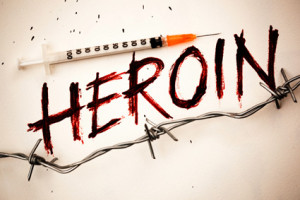SCHUMER ANNOUNCES: AFTER HIS PUSH, SPECIAL DEA ENFORCEMENT TEAM NOW HEADED TO NEW YORK; TEAM WILL COMBAT OPIOID CRISIS ACROSS ENTIRE STATE; DOSE OF NEW AGENTS WILL FIGHT FLOW & SCOURGE OF HEROIN, FENTANYL AND OTHER DEADLY DRUGS; OVERDOSE RATES HERE NOW AMONG HIGHEST IN NATION
Schumer Helped Secure Millions In Last Year’s Budget Bill To Create New DEA “Heroin Enforcement Teams;” New York’s Heroin Epidemic is Rampant; Reports Show Grip Of Heroin & Opioids Accounting For Average Of 4 Overdose Deaths A Day In NYC Alone; Rate Of Overdoses In NYC Has Increased 143% Since 2010; Nassau & Suffolk Seeing Similar Surge
Schumer Announces DEA Will Deploy One of Six Heroin Enforcement Teams to New York; Other Teams Will Be Sent to Charleston, Cleveland, Cincinnati, New Bedford and Raleigh; Earlier This Year, Senator Urged DEA to Provide NY With These Agents
Schumer: DEA Has Officially Commissioned An A-Team To Zero In On NYC, LI Heroin & FentanylEpidemic
U.S. Senator Charles E. Schumer today announced that, following his major push and funding effort, the Drug Enforcement Agency (DEA) will provide New York State with a special heroin enforcement team, stationed on Long Island. Earlier this year, Schumer urged the DEA to commit to providing New York with one of the special teams being delivered to states suffering from heroin abuse. Today, the DEA said that the six teams will be delivered to: Long Island, Charleston, Cleveland, Cincinnati, New Bedford and Raleigh.
“New York is getting an A-Team to help tackle the heroin and fentanyl epidemic and it couldn’t come soon enough,” said U.S. Senator Charles Schumer. “I helped deliver the funds the DEA needed to create these teams because we are in urgent need of help and a special heroin enforcement team will lend a major hand in the fight to end the opioid scourge. I’m pleased that the feds have heeded the call. As the overdoses related to illicit fentanyl and other synthetic opioids increase, the new enforcement team will help the NYPD, Long Island and other local police departments across the state contain and beat back the dangerous tide. We must not let off the gas pedal in the fight against opioid dealers, abuse and death in New York.”
Schumer secured $12.5 million in federal funding for DEA in the Fiscal Year 2017 (FY17) omnibus funding bill for the creation of new enforcement groups specifically dedicated to counteracting heroin andfentanyl trafficking and eradicating its availability. The new DEA enforcement groups will be directed to states that report heroin as the highest drug threat. In New York, the team will be comprised of two new DEA agents plus two officers from an existing task force.
Earlier this year, in making the case for New York, Schumer said that the numbers speak for themselves. New York’s heroin overdose death rate increased by 30 percent in 2015. Between the years 2005-2014, the state documented a 115 percent increase in heroin treatment admissions in upstate New York and a 116 percent increase on Long Island. In all, approximately 1.4 million New Yorkers suffer from a substance abuse disorder. Schumer also said that the New York DEA Field Division has identified New York City as a major distribution hub for heroin mills that use JFK International Airport as an entry point to more easily access the greater Northeast region. Schumer said it makes sense to deliver one of these teams to New York State where local law enforcement are on the frontlines. In fact, recently, agents seized enough fentanyl to kill 32 million people – the largest such bust in New York City history.
According to the DEA, the threat posed by heroin andillicit fentanyl abuse and availability nationwide has steadily increased since 2007. In 2014, 10,574 Americans died from heroin-related overdoses, and between 2007 and 2014, the number of heroin-related deaths increased 341 percent. Schumer said that New York has fallen victim to these deadly statistics, and therefore is in dire need of the team that will be entering the state. Since 2006, New York’s heroin overdose death rate has equaled or exceeded the national rate. The Centers for Disease Control and Prevention (CDC) attributed 1,058 deaths to heroin in 2015, an increase of nearly 29 percent from the previous year. In 2013, an average of two New Yorkers a day died of heroin-related overdoses. According to the CDC, illicit fentanyl and other synthetic opioid painkillers are now the leading cause of overdose deaths nationwide, killing more than 20,000 people last year.
According to the NYC Department of Health, there were 1,374 unintentional drug overdose deaths in New York City in 2016, compared to 937 unintentional drug overdose deaths in 2015—an increase of 437. Approximately four fatal drug overdoses occurred each day in New York City last year. More than eight in ten overdose deaths involved an opioid and heroin was involved in 751 (55 percent) of all fatal overdoses in New York City last year. Fentanyl was involved in 44 percent of all fatal overdoses last year.
The opioid epidemic has also hit Long Island especially hard. According to the New York State Department of Health, in 2015 there were 172 opioid overdose deaths in Nassau County, including 71 related to heroin; 213 opioid overdose deaths in Suffolk County, including 137 related to heroin. According to the New York Daily News, Nassau and Suffolk Counties reported 493 opioid overdoses in 2016. During the week of June 3rd, Suffolk County reported 22 overdoses over a two day span, including one that was fatal. Overall, the number of fatalities could have been even worse if not for the life-saving antidote naloxone.
The heavy costs required to combat the epidemic has also impacted local law enforcement, in their efforts to head off the steady flow of trafficked drugs. Twenty-five New York counties are considered High Intensity Drug Trafficking Areas (HIDTAs), with each uniquely structured to confront the drug challenges of the particular area. Schumer said that the special heroin enforcement team commissioned in New York will allow the DEA to leverage federal investments already in use, like Drug Intelligence Officers, and bolster existing drug trafficking efforts. Schumer suggested that the new DEA team work closely with both local law enforcement agencies and HIDTA counties to dismantle large trafficking networks and root out the heroin at its source.


